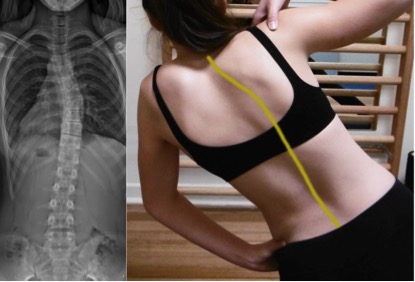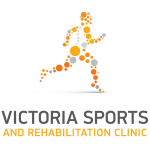The Schroth Method
The Schroth Method is a specific scoliosis exercise program used as a conservative treatment of scoliosis. The Schroth Method exercises are quite different from normal exercises. The patient places themselves in a position that aims to correct the curvature giving them technically a straight spine, while performing the exercises. It some cases, patients if flexible enough, can reverse their curvature into what is referred as an over-corrected spinal posture. Once in this position the patient uses a technique called rotational breathing which further corrects the curvature. The overall aim is to correct the patient’s posture in all three planes of spinal motion, sagittal, coronal and axial specific to their curve pattern.
When the patient places themselves in a specific position according to their curve, the Schroth exercise technique aims for stabilisation of the spine through activation and strengthening of the muscles surrounding the spine, improving spinal mobility and improving posture. While performing the exercises, the aim is to lengthen the muscles on the concave side, while shortening muscles on the convex side, while further de-rotating the rib cage and trunk.
The Schroth Method can be a very effective form of treatment when performed well. It is important that the Schroth Best Practice program is delivered by a certified practitioner, the Schroth exercises are complex and specifically tailored to each individual’s curve pattern. Once mastered it is an empowering tool patients can use to manage their scoliosis in the long-term.
The objectives of the Schroth Method and potential benefits are:
Halting scoliosis curve progression 1,2
Reduction in curve (Cobb angle) 1,2
Improved lung capacity 3,4,5
Reduction or relieving pain associated with scoliosis 6
Cosmetic improvement – Improved appearance 6
These treatment goals are dependent on the type of curve, curve progression and skeletal maturity. An individual assessment is required to determine potential treatment goals, outcomes and referral if required.

EXAMPLE – The yellow line represents the patient’s curve position as per the x-ray. The over-corrected spinal position can be seen in a patient performing a Schroth exercise with a short thoracic curve.
This is an example only and is specific to the individual, not all patients can
achieve the same postural positions or spinal corrections during exercises
The exercises are specifically tailored to a patient’s curve type. At Victoria Sports and Rehabilitation Clinic we adhere to the Lehnert-Schroth Classification. Your treatment options will be discussed with you and delivered in line with Society on Scoliosis Orthopaedic and Rehabilitation Treatment (SOSORT) guidelines. We offer one on one courses for patients to learn the Schroth Method, if you would like to discuss your treatment options please call the clinic on 03 9787 7702 or email scoliosis@vsrc.com.au
1 – Monticone M, Ambosini E, Cazzaniga D, Rocca B. Active self-correction and task-oriented exercises reduce spinal deformity and improve quality of life in subjects with mild adolescent idiopathic scoliosis. Results of a randomized controlled trial. Eur Spine J. 2014 Feb 28
2 – Tuğba Kuru, İpek Yeldan, E Elçin Dereli, Arzu R Özdinçler, Fatih Dikici, İlker Çolak. The efficacy of three-dimensional Schroth exercises in adolescent idiopathic scoliosis: A randomised controlled clinical trial. Clin Rehabil. 2015 Mar 16
3 – Otman S, Kose N, Yakut Y. The efficacy of Schroth s 3-dimensional exercise therapy in the treatment of adolescent idiopathic scoliosis in Turkey. Saudi Med J. 2005 Sep 26
4 – Weiss HR. The effect of an exercise program on vital capacity and rib mobility in patients with idiopathic scoliosis. Spine. 1991 Jan 16
5 – Moramarco M, Fadzan M, Moramarco K, Heller A, Righter S. The Influence of Short-Term Scoliosis-Specific Exercise Rehabilitation on Pulmonary Function in Patients with AIS. Curr Pediatr Rev. 2015 Nov 17
6 – Schreiber S, Parent EC, Moez EK, Hedden DM, Hill D, Moreau MJ, Lou E, Watkins EM, Southon SC. The effect of Schroth exercises added to the standard of care on the quality of life and muscle endurance in adolescents with idiopathic scoliosis-an assessor and statistician blinded randomized controlled trial. Scoliosis. 2015 Sep 18
